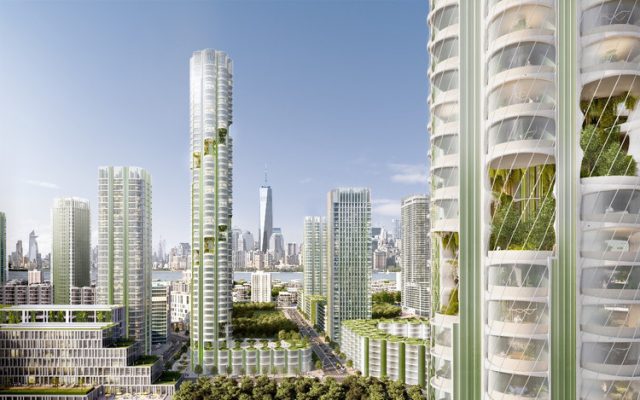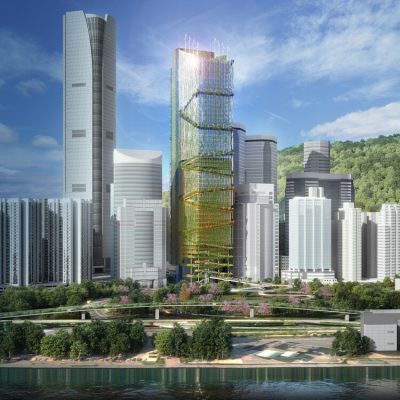With the magnitude and urgency of the immediate Covid-19 crisis worldwide, efforts have been concentrated on saving lives, rather than focusing on concerns related to the road to Net-zero carbon. Net Zero carbon in regards to construction is defined as when the amount of carbon emissions associated with the construction of a building and its completion is zero. A zero-energy building will have an overall zero net energy consumption; the total amount of energy used by the building annually is equal to the amount of renewable energy generated on-site.

Urban Sequoia Forests of Buildings Isolating Carbon & Producing Biomaterials. Image Courtesy of SOM / Miysi
As the climate emergency presents itself as a severe and existential threat, it is crucial that the road to net-zero carbon is resumed large-scale in both an architectural and commercial sense. Around the globe, efforts have been renewed in an attempt to tackle the almost inconceivable. According to the 2019 global status report for buildings and construction, the buildings and construction sector accounted for 36% of final energy use and process-related carbon emissions in 2018. Although carbon emissions were temporarily reduced during the peak of the pandemic, they are set to swiftly return to previous figures.

Carbon Neutral Tower in Hong Kong . Image Courtesy of ARUP
In order to meet international commitments laid out by the 2015 Paris agreement, global emissions need to be slashed to net-zero by mid-century. In late 2021, the UK government set out its strategy for meeting net-zero carbon targets, a year later than expected due to the emergence of the Covid-19 catastrophe in early 2020. A topic of conversation that appeared hurried, a fortnight before the UK found itself in the COP26 UN climate talks in Glasgow, critics suggest that it lacks both ambition and sufficient funds to be carried out.
Archdaily



